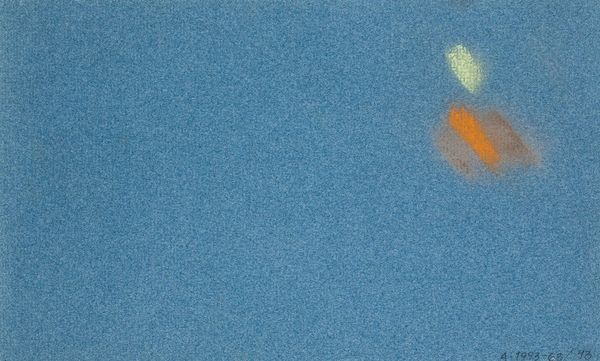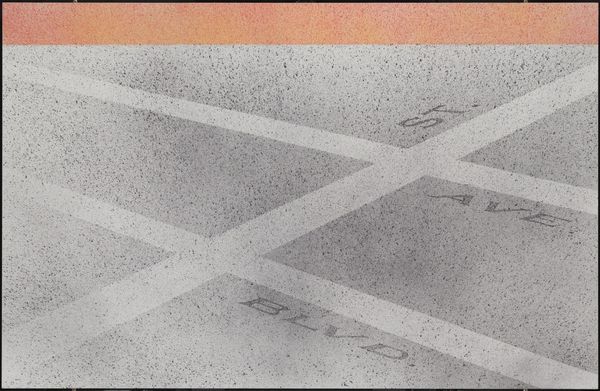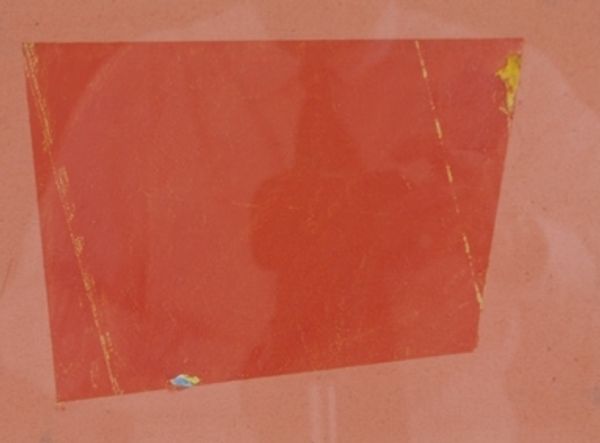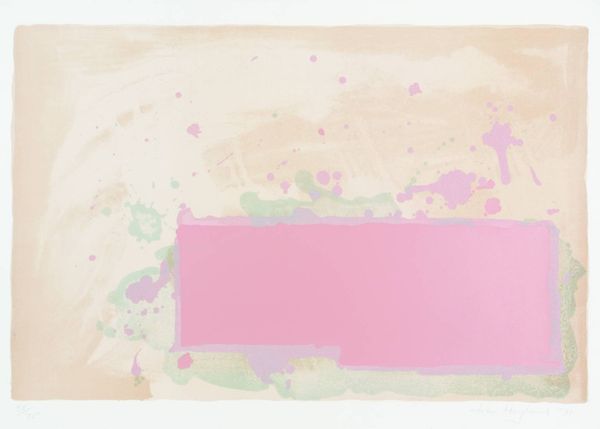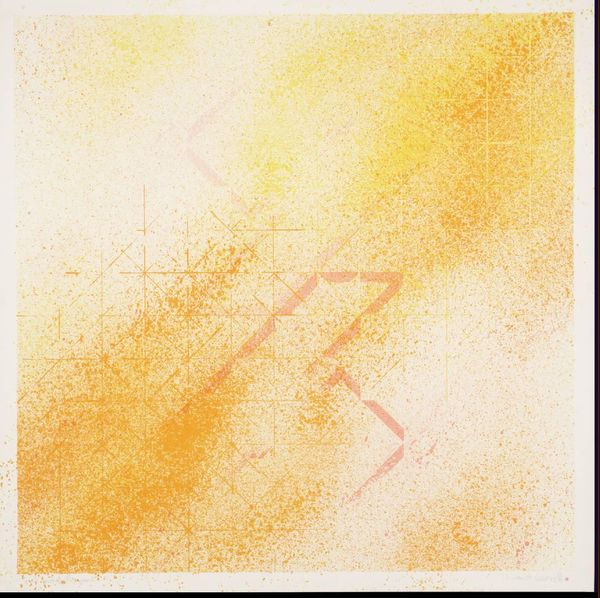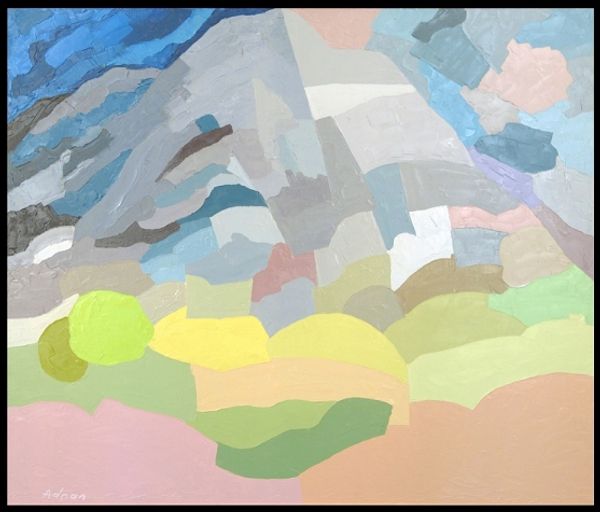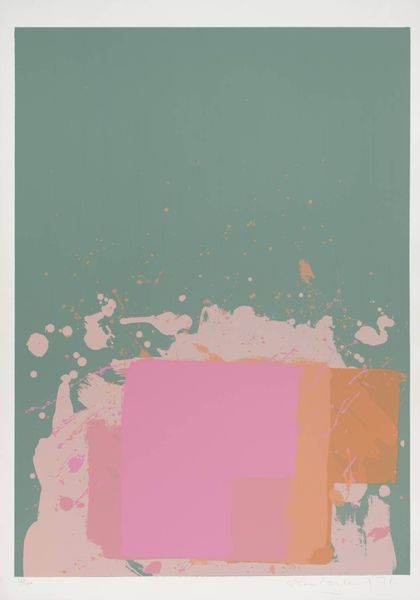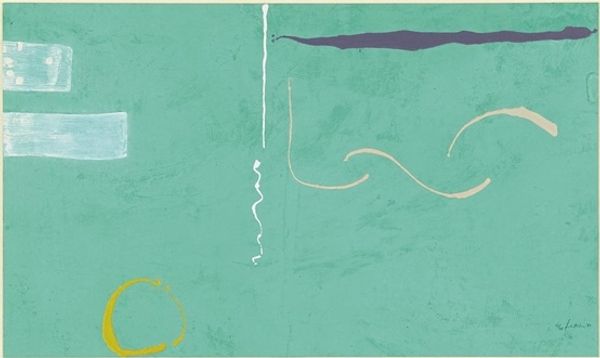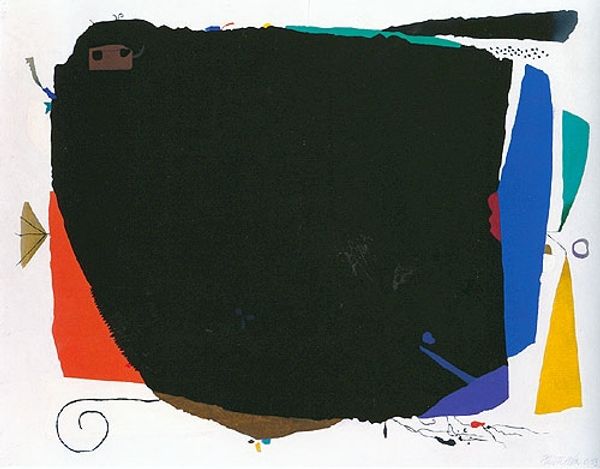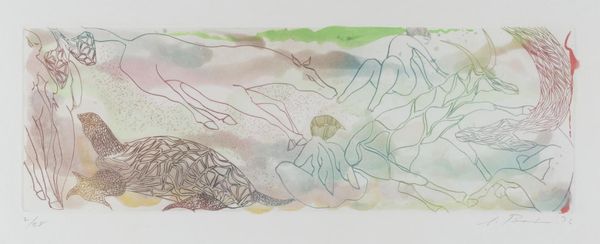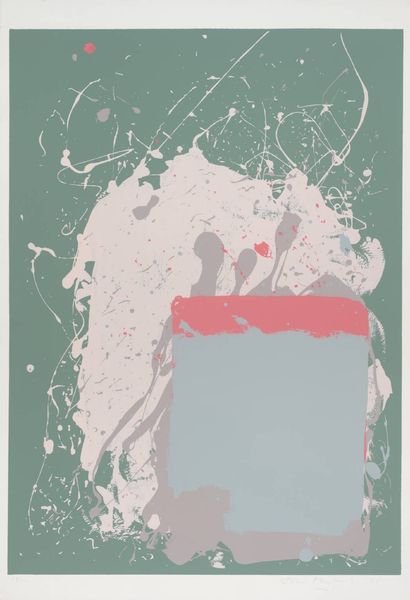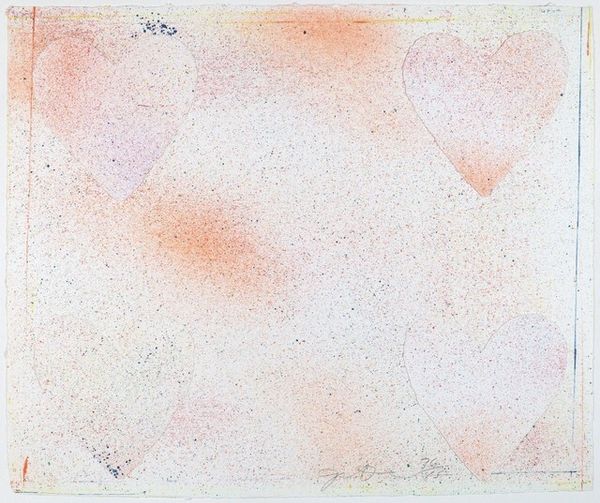
Copyright: National Gallery of Art: CC0 1.0
Editor: So this is Christopher Cordes’s "When the Legend Dies," a print using watercolors, from 1972. There's this soft, mottled background with what looks like a small, rather lonely triangle in the corner. It's… melancholy? What do you make of it? Curator: It's tempting to focus on the image itself, but as a materialist, I’m more drawn to the means of its production and reception. A watercolor print raises questions about reproducibility, about how this object exists both as a unique work, due to the hand of the artist and how this work fits into the system of consumption. Does this particular triangle carry some weight for its first audiences? Editor: I hadn't thought about the implications of it being a print – I was so caught up in the image. Does the choice of watercolor as a medium speak to its value of accessibility at that time, making multiples rather than one original piece? Curator: Exactly. Watercolor prints allowed artists to engage with a wider audience. Post-Impressionism as we knew it has passed at this point, but the impact it has had on Cordes is very clear in this piece. Where was it exhibited and consumed, by whom, and for what price? These factors define its cultural value. Was it part of an exhibit, a gallery somewhere? Who buys it? The legend dies because what used to mean something does not reach the current moment? Editor: That’s a great point, really re-contextualizing my view of this print! Instead of a sad, singular object, it is made accessible. Now I'm thinking about who might own something like this and what that watercolor reproduction means to them and the world around it. Curator: Thinking about that transformation from 'high art' to the quotidian. Something that is lost in contemporary consumer culture that may have once been powerful in its own right. It does seem less melancholy and more resilient, now.
Comments
No comments
Be the first to comment and join the conversation on the ultimate creative platform.
